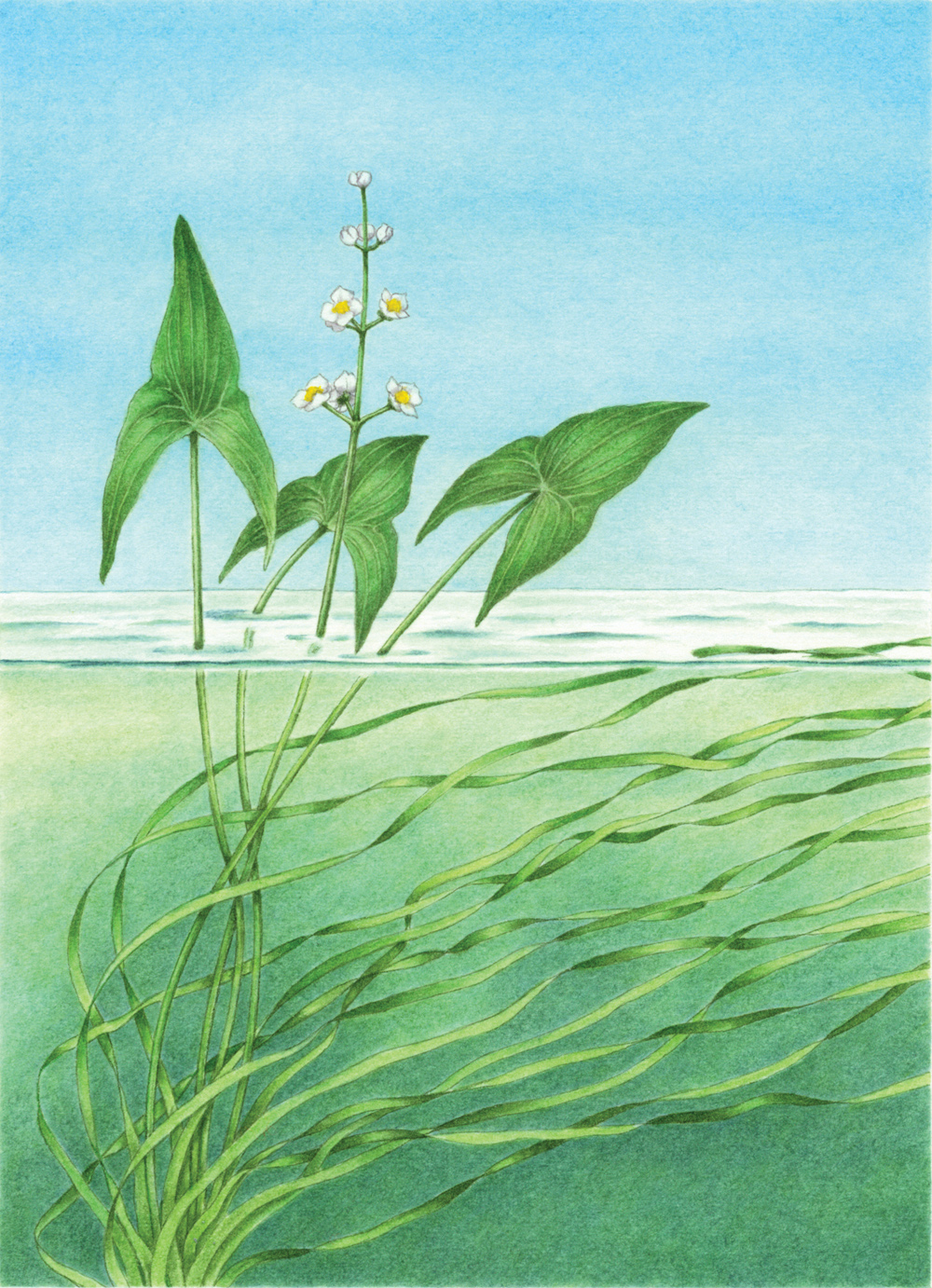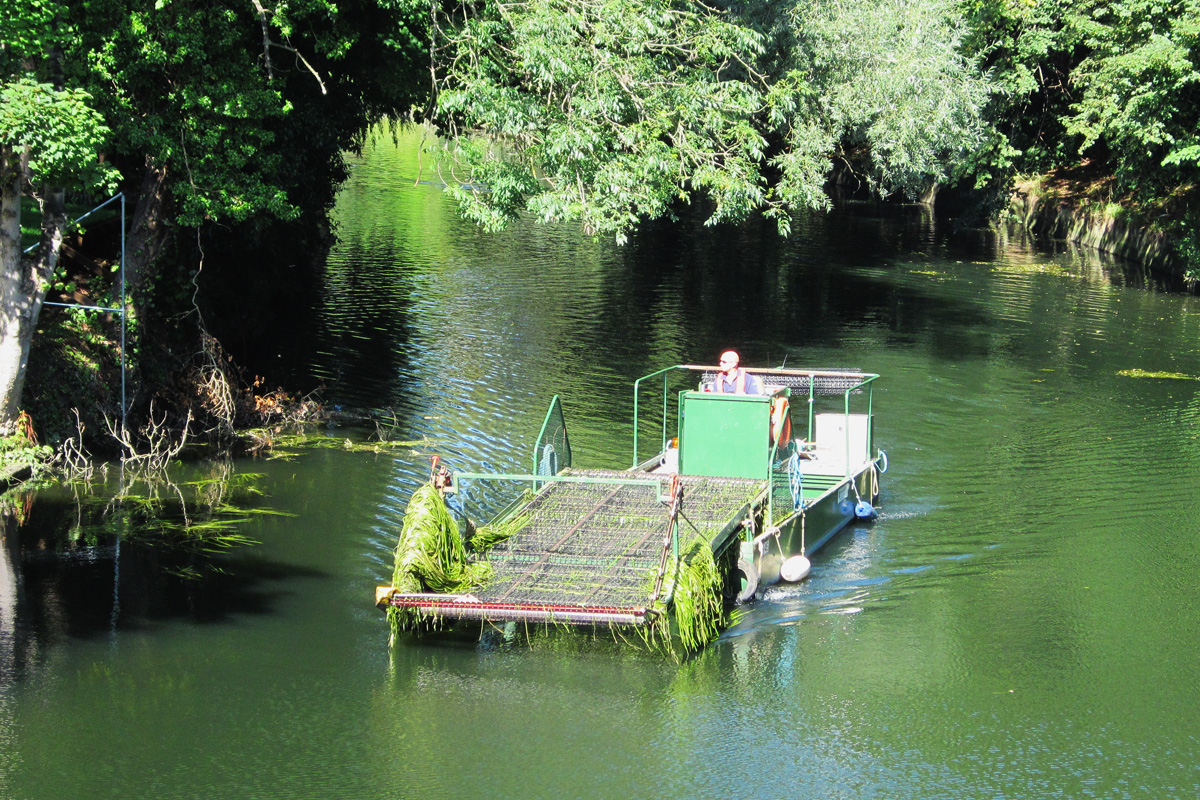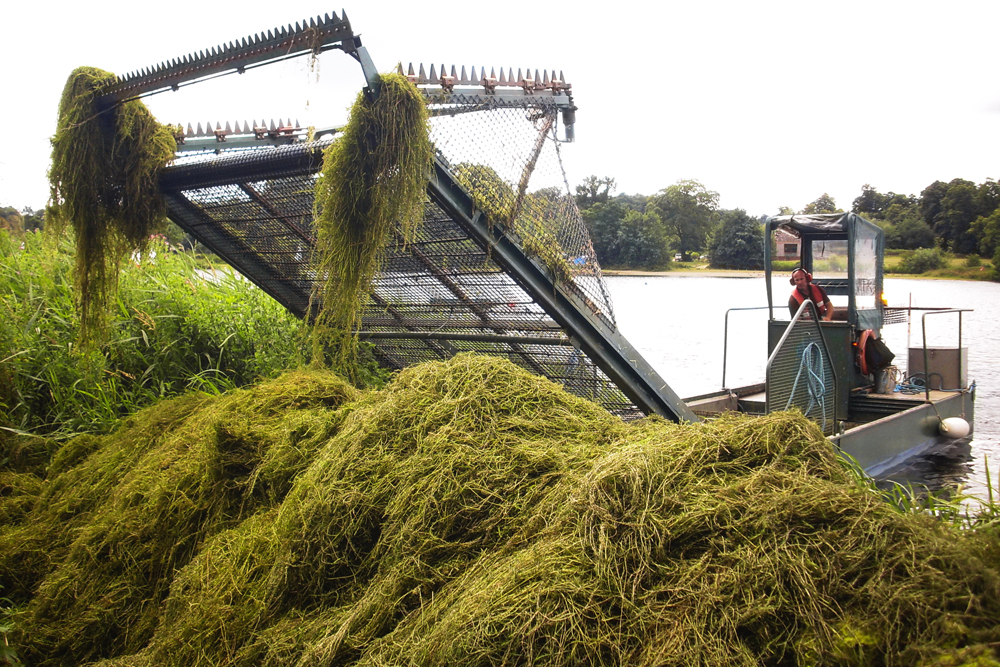Water plant cutting
Our busy programme of water plant management helps us to maintain a balance between the requirements of boaters and the conservation of habitats for wildlife.
What we do
The waterways of the Broads provide an important habitat for a number of water plant species which provide refuge and sources of food for fish, birds and water invertebrates.
However, plant growth in certain areas can severely impact upon the navigation and therefore needs to be managed.
The Authority has three plant cutting vessels; two in the Northern and one in the Southern rivers. We prioritise cutting in the main rivers and marked channels throughout the Broads so they are clear and accessible to vessels.
Between April and October (the summer season when the plants grow) both plant cutters have an extremely busy schedule, work continuously and are out cutting every day.
During warmer months plants are likely to grow more vigorously due to favourable temperatures and conditions, although after October they will die down naturally.
Each cutting vessel has a set of cutting knives attached to a conveyor belt, which cut the plants about a foot above the riverbed. The harvested plants are usually placed in low heaps on the bankside or taken to make compost.
Where we cut
Bure – Horstead to Belaugh
Ant – Cutting did not take place on the Ant in 2022 due to floating pennywort in the river system
Upper Thurne – Hickling Broad marked channel, Waxham Cut, Meadow Dyke, West Somerton to Martham Ferry
Wensum and Yare – Norwich city centre to Thorpe
Waveney – Barsham Marshes to Beccles, Geldeston
In addition to the main rivers and marked channels in larger broads that we already manage, some new locations were added in 2022. The marked channels through Rockland and Bargate Broads now feature in the annual programme.
To protect fish and bird populations, it is essential we leave plants on the river edges / broad margins and do not entirely remove them from the river bed, where many rare and protected species of plants and wildlife live.
Why are there so many plants?
In recent years, a reduction in the amount of nutrients and sediments entering the Broads waterways has produced clearer water, which means that plants have thrived. As water clarity improves, it is likely that increased growth of water plants will become more common across the Broads waterways.
What to do if you are concerned about water plants?
Please only contact the Authority if you are concerned about water-plant growth within the main channel of rivers and broads. Be aware that cutting water plants in many areas outside the main channel may be prohibited to prevent damage to wildlife.
We do not cut privately owned Broads such as Wroxham Broad and Hoveton Little Broad (Black Horse Broad).
As the water-plant harvesting vessel operates, the cut plants are gathered up by a conveyor belt and collected into the boat. Some cut fragments of plant can escape, but these generally float and gather in still areas. To report excessive water-plant growth, please email: Broads.Control@broads-authority.gov.uk with an exact location and preferably photographs.
Surveying
Water plants generally only thrive in cleaner water and their abundance is evidence of the efforts of the Authority and partners over the last fifty years to remove many of the harmful nutrients and contaminants which had previously polluted the broads.
Ecologists and Rangers will identify cutting locations by working with the sailing community, partners including Natural England and by monitoring the local environmental conditions necessary for aquatic life. Cutting locations vary depending on where plants grow during the growing season, changes in temperature and oxygen levels in the water.
The final locations are then planned by the Authority’s Ecologists, who monitor variations in temperature and oxygen levels in the water before scheduling in the cutting by the Maintenance team.
Read our annual water plant monitoring reports for more detailed information.
Plant species

There is a lot of variety when it comes to water plants, some have fully submerged leaves, several species have floating leaves and some are even free-floating without roots. Growth of water plants depends on water clarity, as murky water blocks the light that the plants need to grow.
Below are the top five species that we cut in the Broads.
- Yellow water lily (Nuphar lutea) - The underwater leaves look like juicy lettuce, in contrast to the floating leaves, which often appear waxy or shiny. Lilies are buoyant in the water.
- Arrowhead or ribbonweed (Sagittaria sagittifolia) - The streamer-like underwater leaves are long and trail in flowing water where this plant prefers to grow.
- Spiked water milfoil (Myriophyllum spicatum) - This species is often found in the slightly saline water of the River Thurne and its associated broads.
- Mare’s tail (Hippurus vulgaris) - Has air-filled tubes in its stems keeping it afloat and poking up out of the water.
- Nuttall’s waterweed or pondweed (Elodea nuttallii) - This is a long established non-native plant now found growing all across the Broads



